JAN 2023 |



6-9
WHERE TO TURN WHEN YOU NEED TO TALK
There’s a lot that needs to be done to remove the roadblocks to speaking up and to ensure that when men do try and get help, they get what they need. But there are also some solid options for men who want to share their worries.
10-11
REMOVING THE SECRECY AROUND SPERM DONATION
Discussions around using donor sperm have come a long way from the days when parents were encouraged by doctors to keep it a secret. But there’s still a stigma and shame around infertility, as well as a lack of awareness about the rights of donor-conceived children.
© Healthy Male 2022
Healthy Male is supported by funding from the Australian Government Department of Health.
For information on contributing to The Male, please contact us at info@healthymale.org.au
FOR HEALTH PROFESSIONALS
12-13
SHUTTING DOWN STI STIGMA
The experience and anticipation of STI stigma can impact a person’s physical and mental wellbeing, influencing whether they’ll get tested, take treatment and notify their sexual partners to prevent further spreading. Learn to address the stigma and shut down the shame.
14-15
16-17
THIS CONDITION ISN’T RARE, BUT IT’S RARELY DIAGNOSED
While there’s no cure for Klinefelter syndrome, timely diagnosis and specialist management can significantly enhance the quality of life of those who have it. And a better understanding of men’s lived experience can help bust the misconceptions that make the condition hard to talk about.
18-19
HOW DIRECT-TO-CONSUMER GENETIC TESTING CHANGES THE CONVERSATION ABOUT HEALTH
Health information from directto-consumer genetic tests can easily mislead people and cause unwarranted concern or reassurance about disease risk, but they also present opportunities when it comes to caring for patients.
20-21
“THERE’S
A LOT TO DEAL WITH ON A PHYSICAL LEVEL AND AN EMOTIONAL LEVEL”
The experience of prostate cancer can be quite different for people who are LGBTIQ+. John shares his experience with the disease and what he wants every person with a prostate, regardless of their sexuality, to know.
SEXISM IN MEDICINE IS BAD FOR EVERYONE
Medicine has a sexist history that compromises healthcare for people of all genders. Precision medicine offers a chance to properly consider the roles of sex and gender in health and wellbeing
22-23
HOW HEALTH SERVICES CAN BETTER SUPPORT BOYS AND MEN
Disruption alone will not solve the problem of how to improve the health of men and boys. Services that cater fully to their specific health needs and behaviours are required.
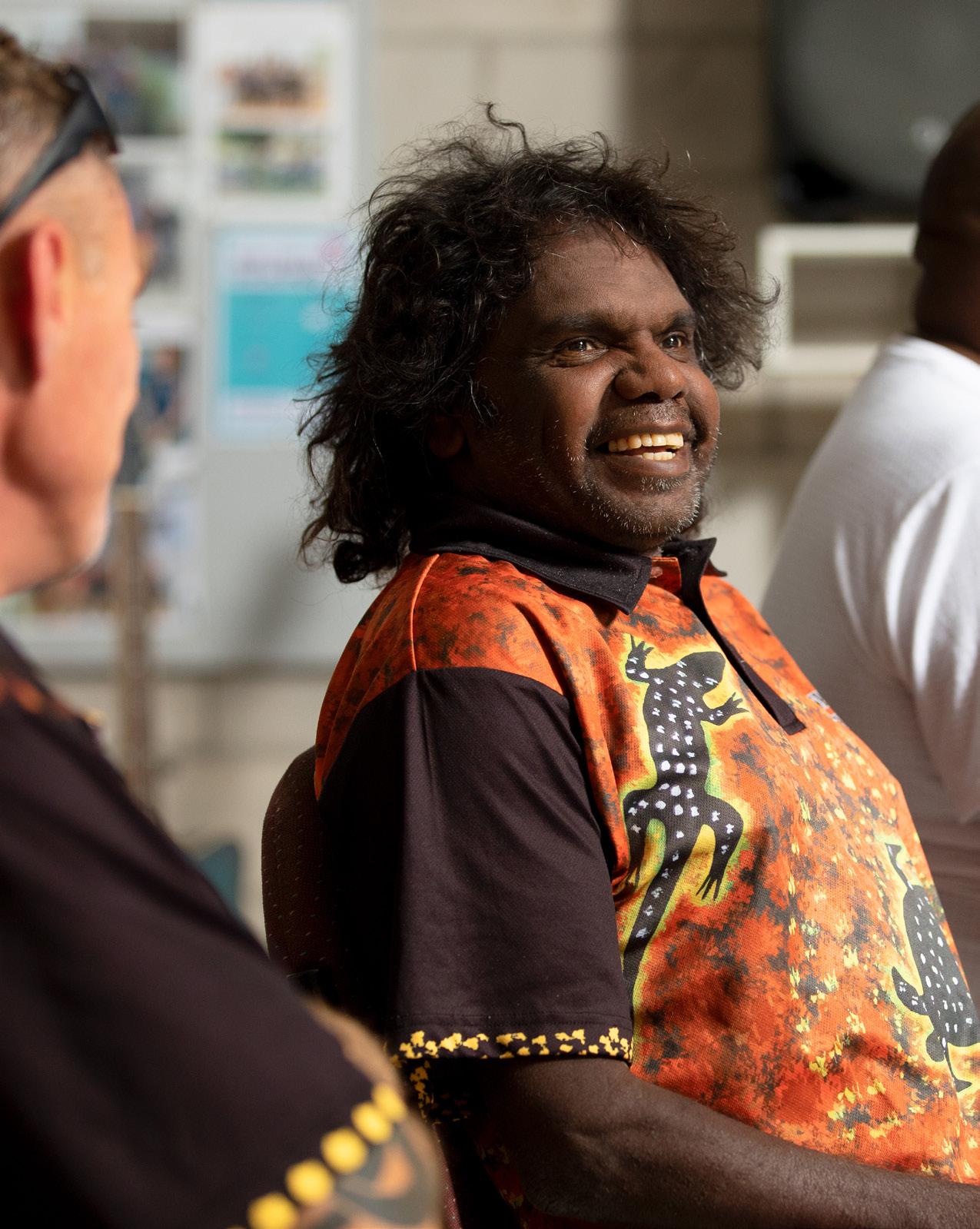
Welcome
Whether it’s making evidence-based content accessible to all Australian men or helping health professionals to become better at communicating with their male patients — conversation is a big part of what we do at Healthy Male.
That’s why issue #8 of The Male is covering critical conversations — from the men’s health topics we don’t talk about enough (such as using donated sperm to grow a family, p10-11) to effectively discussing important wellbeing developments with male patients (like the growth of direct-to-consumer genetic testing, p18-19).
As men, we need to change the conversations we’re already having, especially when it comes to sexual health. Sexual health is a really important part of our overall health and discussing it should be a priority. Shame can hold us back, especially when it comes to sexually transmitted infections (STIs). Very few other health issues have the same level of stigma attached to them, which causes further harm and spread. Open conversations are a critical part of STI prevention, treatment and management — from awareness and education at a school-level to seeking help from health professionals and communicating with sexual partners.
At a health care level, the way we talk to men to engage them is also critical. On pages 24-25 we look at why creating personalised services that speak to men and their needs is more important than ever. This extends to how we approach medical research, which needs to include the impact of sex differences to produce the best health outcomes for everyone.
We’re also looking at conversations literally, exploring why talking about the tough stuff is important for men and how they can do it better. This is something I’ve had to learn to do more because, like many boys, I was brought up to not complain about how I felt. Growing up as there was an expectation, amongst my peers and the adults around us, that if you’ve got a sore leg, walk it off — an instruction that extended to emotional pain as well. Therefore, you don’t have a blueprint for sharing your problems because your role models never did and it’s very difficult, especially as a bloke in his 50s.
But change is occurring, especially in younger men. The young guys I know are much more comfortable talking about their emotions or just taking a moment because they’re not in the right headspace. The more that can happen, the better off we’ll all be because the benefits of communicating aren’t just individual but affect everything from their close relationships to the wider community. This is clear in the work we do with dads through Plus Paternal — when the father is in the healthiest space for a new child and then can be available both mentally and physically for that child, there are benefits for the whole family.
My advice to anyone reading this is to think about your safe place before you actually need it. Think about where you would go or who would you speak to, whatever the issue is, health or otherwise. Because nothing ever got solved by bottling it up.
Simon von Saldern Healthy Male CEO
NEED TO


Where to turn when you need to talk

Talking about your feelings (something psychologists call ‘affect labelling’) can help you regulate the way you feel, and contribute to better mental health. Although men are encouraged to talk about their emotions and reach out for help when life gets heavy, masculine norms that encourage them to be stoic, strong and self-reliant might make them feel like sharing their worries is weak or shameful. These restrictive expressions of masculinity are increasingly questioned and challenged, but many men grew up with “man up” and “boys don’t cry” as the typical response to displays of emotion. It’s little wonder that despite most men (77%) thinking that talking is an effective way to deal with problems, 38% avoid talking to others about how they feel to avoid appearing unmanly,
and 43% wish they could talk more to others about personal problems1 .
It seems natural to turn to those closest to you when you need support but opening up to other men isn’t always straightforward. One-quarter of men in their middle years say they don’t have someone else they can rely on aside from immediate family, and one in three aren’t satisfied with the quality of their relationships, typically because they don’t feel emotionally connected or supported2 . Mates and family members might also not respond well, whether that’s dismissing the issue or trying to fix it. Around 41% of men say they have regretted opening up to someone about their problems and over half of these men (53%) say that this experience would prevent them from opening up again.
Seeing a therapist is encouraged but, while men’s use of counselling is increasing3, there are still significant barriers to men seeing a psychologist. The belief that a lot of people feel sad and down and feeling like they need to solve their problems themselves 4 can prevent someone from seeking help. Long waiting lists and the cost of appointments can also stop someone from following through, and they can be reluctant to return if treatment doesn’t meet their needs.
There’s a lot that needs to be done to remove the roadblocks to speaking up and to ensure that when men do try and get help, they receive an appropriate and effective response. Here are some solid options for men who want to share their worries.
Support lines


The simplest option is picking up the phone and getting things off your chest confidentially, anonymously and accessibly. There are a range of organisations that provide 24/7 support, but options tailored to the needs of men and priority populations are particularly important. MensLine offers free, professional telephone counselling using a style preferred by men called solution-focused brief therapy. It’s a short-term goalfocused approach that gets the person to focus on the reason for the call (which might be struggles with relationships, connection, family, mental health, work or societal expectations), reframe thought patterns and talk through immediate solutions.
“It’s really about connecting men with people who are not judging,” says Dr Jakqui Barnfield, Director of Clinical Services at MensLine. “Men have a sense that they’re being judged if they are acknowledging they’re vulnerable.”
Jakqui says some men call regularly to keep on an even keel, some are in between psychologist appointments due to the demand for services, and some are in crisis and a call is the last resort.
Marjorie Anderson is the National Program Manager for 13YARN — the first culturally safe, national support line for Aboriginal and Torres Strait Islander people, run by Aboriginal and Torres Strait Islander people.
“Even though it’s a crisis support line, if you’re feeling anxious or worried or just feeling no good, just ring the line and have a chat with a crisis supporter and sometimes you can avoid the crisis in the first place,” Marjorie says. “There’s a real shame with talking about mental health in the community. It hasn’t been encouraged in the past and Aboriginal men see it as a sign of weakness, but there is some really fantastic work going on with elders and senior lawmen saying that it’s okay to show emotions and it’s okay to ask for help, and that’s actually what a strong man does.”
TALK?
“The message that we got clearly from the community, is if they reach out to people who are nonAboriginal to get help with their mental health, they often have to educate that person on our culture, on our family makeup, our community and family responsibilities, our connection to land and sea and our responsibilities in the community as well … so that they can get an understanding of what’s going on with this person. With 13YARN, it’s Aboriginal people on the end of the line, so they understand all that. You can just get down to what you need and what your needs are, so that’s where the line is really culturally safe.”
Marjorie Anderson
Men’s groups
There are a growing number of men’s groups that organise regular catch-ups where men can talk freely about how they feel, knowing that the other men in the space are receptive and supportive. The Men’s Table is one of these, set up in 2011 by Ben Hughes and David Pointon, who wanted to expand their conversations beyond footy scores. What started as a single table has grown to 158, with groups of men gathering all over Australia working towards their purpose of healthy men, healthy masculinities and healthy communities.
“[Men] feel stuck. They see the, ‘are you okay?’ and ‘you should have a conversation’ message, but they look around and go, ‘Yeah, but who do I talk with? Who do I have that conversation with?’,” David says. “The value of the men’s group is, typically you’re not doing it with existing relationships, it’s with a group of men where you’ve never had any history before, but you’re all showing up, ready to start a different kind of relationship, ready to start a different kind of conversation. For a lot of men, they appreciate having an anonymous environment where you’re starting from scratch.”


The benefits of these groups is not only sharing what’s on your mind in a structured way, but listening.
“A huge burden is lifted, because you’re holding all that stuff in and that’s taking energy to hold it in,” David says. “Once a man has shared something, he’s also then taking the time on the same night or in the same conversation, to hear others share their stuff. There’s a tremendous normalising and it’s like, ‘Oh, I’m actually not going mad and I’m not the only one who feels this sort of stuff’, and that’s also very reassuring as well.”
Adam, 33
“It didn’t feel like I could seek out help, I couldn’t talk to others about it, it felt like I just had to struggle through and push ahead and pretend like it wasn’t there. I didn’t go to seek professional help because of the stigmas that exist out there, even though I’d never had someone personally tell me, ‘Oh, as a male you can’t struggle with this, and you can’t get help or medication.’”
Got time to connect? Try these groups
The Men’s Table

The Men’s Table is a safe place to share and be heard in a confidential and non-judgemental environment, creating a greater sense of belonging, camaraderie and connection. themenstable.org
Dads Group
Join one of the 70 Dads Groups established across Australia for a weekly catch-up with other new or expecting fathers, their kids and a coffee. It’s a great way to make new mates in a similar stage of life and support one another through the ups and downs of parenting. dadsgroup.org
Grab Life By The Balls
Whether it’s a coffee, BBQ, barefoot bowls or burger night, Grab Life By The Balls offers laid-back events for men to mingle and make new mates. grablifebytheballs.com.au
Tough Guy Book Club
The Tough Guy Book Club is a network of men’s book clubs in local pubs where you can discuss not only the work of literary greats, but any and all of the issues that men tackle on a daily basis. toughguybookclub.com
Men’s Sheds
The modern Men’s Shed is an updated version of the shed in the backyard that has long been a part of Australian culture. There are over 1200 of them across the country and they offer a space for blokes to connect with one another, learn new skills and contribute to the community. mensshed.org
Mr Perfect
Mr Perfect runs regular BBQs across Australia, where men can connect and chat about life while enjoying a free snag. mrperfect.org.au
REFERENCES


To view the full article with references online, please scan this QR code.

Removing the secrecy around sperm donation
“The first thing I felt was disappointment, grief, why is this happening to me, all that sort of stuff,” says Sam, 33, on discovering he was infertile. Sam was diagnosed with a rare genetic disorder impacting sperm production after a year of trying to conceive with his partner, Anna, 29. After consulting their fertility specialist about their options for creating a family, the couple decided to explore using donated sperm and are in the midst of selecting a donor.
“It was certainly very challenging in the first couple of months to be able to accept that,” Sam says. “With research and homework and reading journals and speaking to my partner, I very slowly came to terms with it, and it’s become the new normal now… There’s more to being a parent than genetics.”
The use of donated sperm to conceive a child is increasing, but we don’t know exactly how common it is. According to The Victorian Assisted Reproductive
Treatment Authority, 1,574 people received sperm donations in Victorian fertility clinics from 1 July 2020 to 30 June 2021, with single women being the largest group using donor sperm (53%), followed by women in same-sex relationships (34%) and people in heterosexual relationships (17%)1
But these statistics don’t paint the full picture, thanks to a lack of nationally consistent legislation monitoring donation practices and a growing trend of informal sperm donations sought through unregulated websites and Facebook groups.
David, 46, has three donor-conceived kids, now in their teen years. He says the drive to have a family and a strong partnership with his wife, Sarah, helped him manage the “confronting” news that he was infertile.
“At the time, I was very much focused on my wife and I, as a couple, starting a family and really doing what
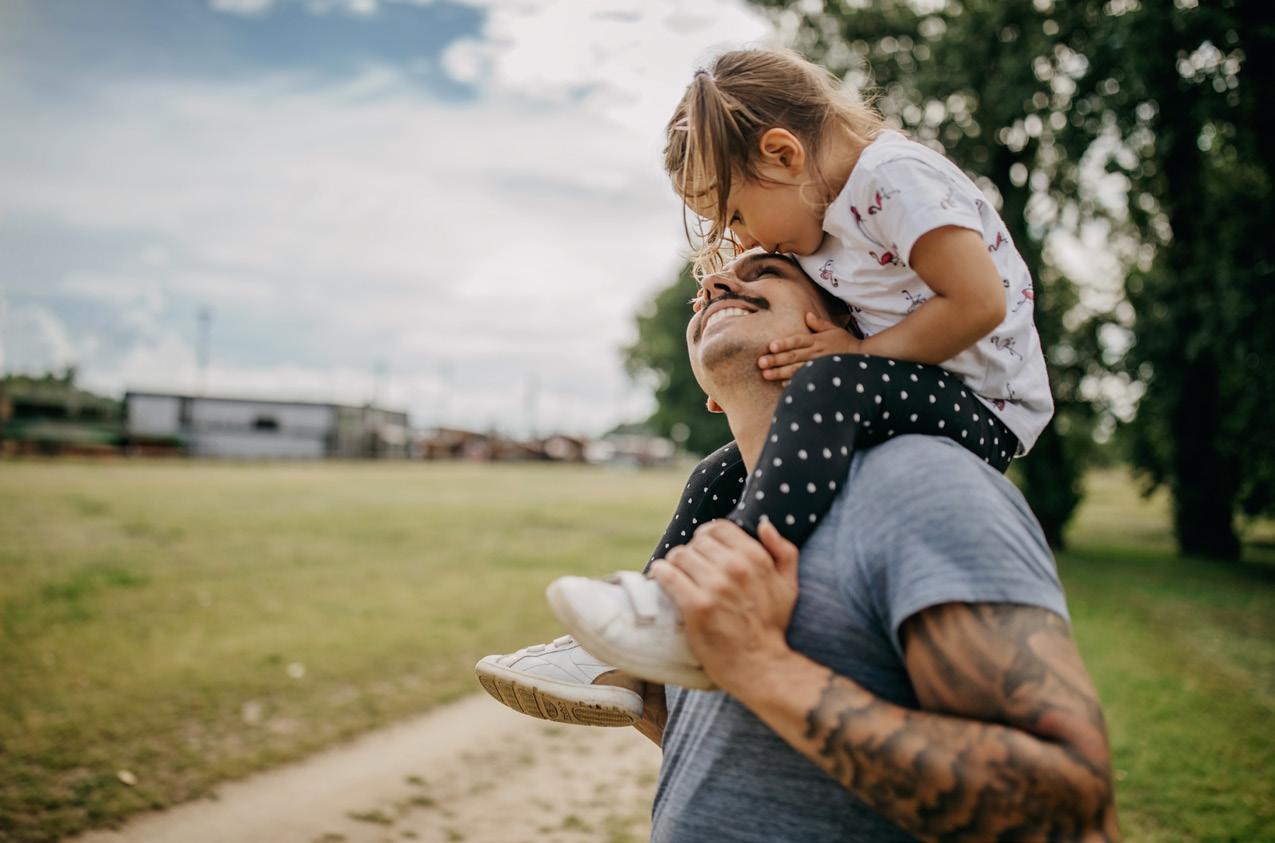
we needed to do to make that happen,” he says. “It was a little bit confronting to some extent, but it wasn’t a massive downer for me, in terms of challenging my concept of who I was as a man.”
Psychologist Narelle Dickinson, who specialises in fertility support counselling, says some men can struggle with the idea of not becoming a biological father.
“They worry that they won’t connect to their child. They worry that this donor is one day going to swoop in and suddenly make a claim over the child and they worry that the child won’t see them as their real dad,” Narelle says. “They also feel like there’s something wrong with them; like that they’re not a real man if they can’t have their own kids, or that their partner might somehow reject them.”
Her advice is to acknowledge these feelings and concerns and talk about them, whether that’s with your partner, a friend, a health professional, or your peers.
David and his wife Sarah joined a fertility support group and, “That was one of the most beneficial things we did,” he says. “[It] opened our eyes up to just how many people were affected by infertility issues and what a broad spectrum there is of situations and treatments … the fact that you’re not alone in going through this journey.”
While David and Sarah kept the process quiet at first, once they decided to use donor sperm they sat down with family members and informed them. And they’ve been transparent with their kids “from the get-go”, with open conversations and education about donor conception.
Discussions around using donor sperm have come a long way from the days when parents were encouraged by doctors to keep it a secret. But there’s still a stigma and shame around infertility, as well as a lack of awareness about the rights of donor-conceived children.
“The research tells us that when we approach donor conception with honesty and openness, what we know is kids are fine, parents are fine, donors are fine,” Narelle says. “Donor conception is not the problem; secrecy is the problem.”
In most states in Australia, legislation now requires identity registration of donors, and parents of donor-conceived kids are encouraged to talk to them about it from an early age, making it a normal part of their family story rather than something that needs to be revealed. The latter can cause significant psychological distress and is becoming increasingly common with the growth of easily accessible DNA testing kits.
“We know that when donor conception is kept secret from the child and then they find out later by accident or when they’re a lot older, that information tends to be a lot more challenging for them to come to terms with,” Dickinson says.
Secrecy can create an impression of shame, and lead to feelings of betrayal and distrust. For many donor-conceived people, knowing their origins is an important part of their identity and knowledge about their medical history has important health implications.
“We’ve had those discussions, if the kids want to talk about it, we talk about it, and that’s how it goes, and it’s really been remarkable,” David says. “As a father, I don’t imagine that I feel any different to any other father, anywhere. You sort of almost forget yourself [that] we needed someone else’s sperm to get these kids, it just doesn’t feel like that, at all.”
The guidelines for sperm donation vary across Australian jurisdictions so it’s best to seek information specific to you. For more information on donor conception check out donorconcievedaustralia.com.au.
REFERENCES
To view the full article with references online, please scan this QR code.

Shutting down STI stigma
We live in an increasingly sex-positive society with frank discussions around things like sexuality, contraception and pleasure. But this openness isn’t universal, nor has it extended to sexually transmitted infections (STIs) — the range of viruses, bacteria and parasites transmitted through sexual contact. The expression, experience and anticipation of STI stigma can impact a person’s physical and mental wellbeing, influencing whether they’ll get tested, take treatment and notify their sexual partners to prevent further spreading1 .
State of play
About 16% of Australians — roughly four million people — report having an STI at some point in their lifetime2 . Despite enormous developments in detecting and treating STIs, their prevalence has mostly worsened in recent years. With the exceptions of hepatitis and HIV, Australia’s most common STIs are on the rise — particularly in Aboriginal and Torres Strait Islander
people, men who have sex with men (MSM), and young people. In 2017, males accounted for more than half (56%) of all new STI cases and in over a decade their rate of chlamydia has doubled, gonorrhoea has increased four-fold and syphilis three-fold3.
Understanding stigma
Health-related stigma is when a person or a group is viewed in a negative way because of a condition and the socially undesirable attributes attached to it. STI stigma stems from society’s beliefs around sex and sexuality that view STIs as signs of irresponsible sexual behaviour.
From a young age, we’re directly and indirectly taught to feel embarrassed, ashamed, judged or condemned for a positive STI result, through education, media, family, peers and health care.
“The messaging about STIs, and sex in general, tends towards the negative — do X and Y will happen, and

you don’t want that — so from a young age we are told that STIs are bad, and as a default, so are the people who get them,” psychosexual therapist Christopher Brett-Renes says. “We are also taught that STIs are connected with particular sexual behaviours, so again, if someone has contracted an STI, it is seen through this lens of behaviour that is deemed as not acceptable, and this can have a knock-on effect later in life.”
While most Australians (63%) say they would never behave negatively towards other people because of STIs, they were much more likely to expect that they would experience stigma or discrimination themselves if they were ever to have an STI 4 . Only 12% believed they would never experience stigma, 62% believed they would at least ‘sometimes’ experience stigma or discrimination and 19% believed this would happen ‘often’ or ‘always’ be the case.
Stigma can prevent people from attending health services to discuss their risk of STI, requesting an STI test or being offered a test, taking STI medication, seeking support from their family, friends and health care providers and notifying their sexual partners 5. If left untreated, these infections can have serious consequences for long-term health.
Although it’s important to take protective measures to prevent STIs by discussing your status with sexual partners, getting regularly tested and using barrier methods like condoms, getting an STI isn’t a moral failing. STIs can infect people regardless of gender, sexual orientation, race or religion; whether you’ve had sex once or a thousand times.
STI stigma can also have a significant impact on how a person deals with a diagnosis.
“Even though many STIs are treatable, and others like HIV are very manageable, the diagnosis can trigger a significant psychological reaction, including extreme levels of distress and even suicidal ideation in some instances,” Christopher says.
Genital herpes (herpes simplex virus type 2 or HSV-2) is especially stigmatised and misunderstood.
“People come in very distressed, worried that they will never have sex or a relationship again, and people have also ended relationships because their partner has herpes, saying that they don’t want to
take the risk of becoming infected themselves,” Christopher says. “However, herpes is incredibly common and quite manageable.”
It also impacts the psychological health, self-esteem and physical health of stigmatised groups, regardless of diagnosis. Stigma and discrimination continue to be reported among LGBTIQ+ populations, sex workers, people with HIV, people who inject drugs, Aboriginal and Torres Strait Islander people, and culturally and linguistically diverse populations6.
Shutting down shame
More research is needed to find the best strategies to address STI stigma, but normalising discussions around sexual health and improving sex education is a good start. Overall, there’s a critical need to improve the knowledge and awareness of STIs among priority populations, health professionals and the wider community. Understanding that STIs are common, can affect anyone, they’re easily treatable or manageable and do not determine your character, can help change how we perceive them.
For more information, please go to healthymale.org.au/mens-health/ stis.
REFERENCES
To view the full article with references online, please scan this QR code.

“STI stigma creates the ‘it won’t happen to me’ fallacy and perpetuates the negative stereotypes that people have of a person with an STI,” Christopher says. “This can affect a person getting tested because they don’t believe that they would ever get an STI — but news flash, STIs don’t discriminate, and some can be asymptomatic.”
Theoretically, the diagnosis and treatment of prostate cancer are the same for everyone born with a prostate. However, the experience of prostate cancer can be quite different for people who are LGBTIQ+. John, 69, a gay man from inner-city Melbourne, was diagnosed with aggressive prostate cancer in July 2022. He shares his experience with the disease and what he wants every person with a prostate, regardless of their sexuality, to know.
I thought I knew all there was to know about prostate cancer — my father died of the disease. I was with him through his illness, taking him to his appointments, and I was with him when he died, much too young, at 68. Because of my family history, I’d have regular PSA tests done. The last routine screening was just before COVID-19 and it showed I had an elevated PSA. Then we went into lockdown, and everything went to telehealth. I was living in regional New South Wales with my partner and when the borders shut it all became very complicated.
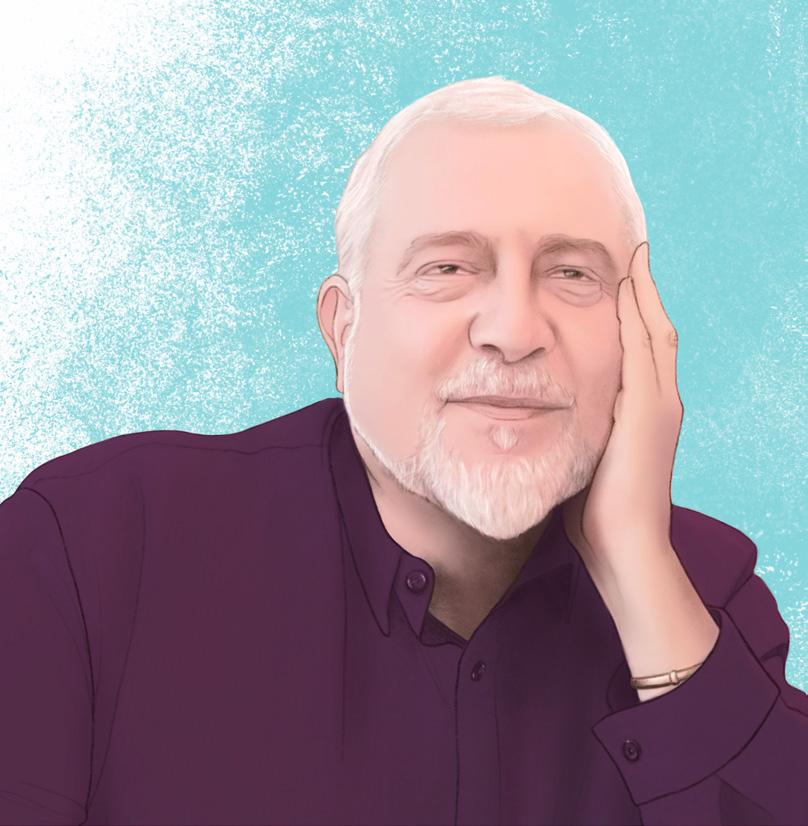
I went back to the doctor at the start of the year when I had some bladder and bowel issues. Just very vague “symptoms”. He did another PSA test and sent me for ultrasounds, CAT scans and an MRI. They found growths on my kidneys, which I was more worried about, but turned out to be benign. He said my PSA had increased a lot and informed me that I had a very large prostate. He referred me to three urologists and said I needed to take the first one who responds. I got an appointment with one within a week and was quickly booked in for a biopsy after the specialist did a digital rectal examination. I recall his words to me so clearly, “John, your prostate is so large I can’t even get my finger around part of it”. The surgeon called me the day after the procedure and he said, “I’m afraid it’s bad news. You’ve got a very aggressive form of cancer.” It’s nine out of 10 on the Gleeson Score. If there’s something worse than saying you’ve been told you’ve got cancer, it’s putting the adjective ‘aggressive’ in front of the word cancer.
I was knocked for six. I was in a state of shock, I still am really. I said, “Well, surgery then?” And the surgeon said if it’s spread to other organs, surgery wouldn’t be on the table, it’d be radiation therapy, hormone therapy or chemotherapy. I was sent for a PET scan to see what the state of play was.
Real story
I was expecting the worst, of course. The results came back that it wasn’t in other organs. So surgery was now an option. He said, “it needs to come out” and I desperately wanted the cancer out of me, so I had a radical prostatectomy. My urologist talked me through all the side effects very thoroughly. I remember saying to friends, “I can live with incontinence and I can live with impotence, as long as I can live.”
I was operated on a couple of weeks later. He said my prostate, which should be the size of a walnut, was the size of an orange. He also advised me that it had been found in the rectal fat, the seminal vesicles and my pelvic lymph node which were all removed in the lengthy and complicated surgery. The side effects of the surgery were quite confronting. I was so bloated. My face was twice the size of what it really is. I kept saying to the nurses, “The person you’re looking at is somebody I don’t recognise.”
I developed a bladder infection that was difficult to treat, and we were waiting for that to clear up before starting chemotherapy. In the meantime, I had done some tests before seeing my specialist. When I went in to see him with my partner, I was expecting to go into chemo straight away, but the surgeon said my results were bewilderingly good. Zero PSA and zero markers in my blood, so, I’m being monitored to see how it goes. I’m very happy with that joyful news, but I still feel as if I’m living in the shadow of something.
It’s been three months since the surgery and I’m dealing with incontinence, impotence and loss of penis length. There’s a lot to deal with on a physical level and an emotional level.
Seeing the urology physiotherapist, I felt the need to say, “What you see down there now is not the way it was pre-surgery. I’m dealing with this very different look and
impotence and as a gay man, I think all men, if they have sexual dysfunction or erectile dysfunction, that impacts upon them and their relationships. I was quite depressed in the aftermath of the diagnosis. Antidepressants have a role to play in my recovery. I’m also seeing a counsellor. I’m on a mental health plan. I think those things are important and go hand-in-hand with physical recovery.
I’ve got a broad, supportive network of people around me and a very supportive workplace, I can’t stress how important that has been. I’ve also got very good clinicians. They don’t bat an eyelid about my sexuality. The information provided was very general in nature, nothing specifically addressing the needs of gay men but the Prostate Pride Peer Support Group I joined was incredibly valuable for that. I was put onto it by my GP who has a special interest in LGBTIQ+ health. We can talk frankly about our situation, our needs, our sexual lives, our partners, the impact on partners and issues like that. Sex is an important component of our lives. It doesn’t necessarily end at 40 or 50. These personal things need to be part of the open discussion about living well with cancer or recovering from cancer.
Men aren’t good about talking about their bits. They’re not good about talking about their prostate. They’re not good at talking about their health. I think gay men are probably more aware — and those at risk of HIV or living with HIV — they’re pretty good at having three-monthly check-ups. But even with my friends who are gay and had “prostate problems”, I wasn’t even aware they had prostate cancer. They kept it all so quiet and private. I want people to know my story. I want people to be aware of the risk, to have regular checkups, and to monitor their health. I’m mentioning to people all the time, gay or straight, “Please get a regular PSA test.”
I wouldn’t wish prostate cancer upon anybody at all. I don’t want to die. I’ve got a lot of living to do. I want to see what happens to my daughter, who’s 23. I want to spend more time with my partner, I want to do things in life. There’s always a trip to be had and music to be heard. I’m thankful I am alive and I sincerely hope it doesn’t come back. However, if it does, I think I’m in a better place to deal with it on all levels, particularly the emotional level with all my support. We just need to help each other at every turn, to enhance the road to recovery.
Head to PCFA.org.au to find more resources for LGBTIQ+ people with prostate cancer and connect with peer support groups near you.
REFERENCES
To read John’s story and others on our website, please scan this QR code.

This men’s health condition isn’t rare, but it’s rarely diagnosed
Klinefelter syndrome refers to a collection of characteristics in males that are caused by having two or more X chromosomes. It’s the most common chromosomal disorder affecting men and it can have a range of physical, mental and social effects.
The number of males with Klinefelter syndrome is not known, but one to two in 1000 newborn baby boys are diagnosed with the condition. If you’ve never heard of it, you’re certainly not alone. Its limited awareness amongst the public and health professionals is one of the reasons many men go undiagnosed throughout their life.
While there’s no cure for Klinefelter syndrome, timely diagnosis and specialist management can significantly enhance the quality of life of those who have it. And a better understanding of men’s lived experience can help bust the misconceptions that make the condition hard to talk about.
Why Klinefelter syndrome isn’t being diagnosed
“Worldwide figures suggest that less than half of men with Klinefelter syndrome are ever diagnosed,” Andrologist and Healthy Male Medical Director, Prof Rob McLachlan, says.

A number of factors contribute to the poor diagnostic rate of Klinefelter syndrome including low awareness, the hesitancy of men to seek medical attention and the variability of symptoms and their severity.
“The fundamental point is that it’s not ‘one size fits all’, there are many different presentations and a range of impacts of this chromosome imbalance,” Prof McLachlan says. “Some of them are so subtle that the men are never diagnosed throughout their life, and some who have got these more noticeable symptoms, such as childhood learning disability, are picked up very early.”
Symptoms of Klinefelter syndrome in childhood may include long legs and tall stature, and difficulties with speaking, learning, behaviour and socialising. Adults with Klinefelter syndrome might notice reduced growth of the testes and penis, reduced facial and body hair growth, reduced muscle and bone development, and gynaecomastia. Some men may experience all of these symptoms and some may have very few. Often men are diagnosed when they try to start a family as even for those with mild symptoms, most men with Klinefelter syndrome produce very few or no sperm and are infertile. Virtually all people with the syndrome have small testes (around the size of a grape).
“We’ve made a particular focus over many years to educate doctors, both GPs and specialists, that men don’t always present as a typical textbook case,” Prof McLachlan says. “It was taught in medical student books to be so obvious, it’s often quite subtle.”
Why men with Klinefelter syndrome need to be diagnosed
“I had not heard of Klinefelter, but I’ve since learnt a lot more about it,” says Geoff, 43, who was diagnosed after he and his wife were unable to conceive. “Being diagnosed made some things fall into place — why I’m as tall as I am, why I’ve always carried more weight around my hips, waist and chest, and why I often felt tired.”
Klinefelter syndrome can impact the health and quality of life of men in a variety of ways. The related issues sound severe, and a quick Google search offers overwhelmingly negative information, but an accurate diagnosis and ongoing specialist treatment managed by your doctor can help minimise the effects of the condition on your wellbeing and improve your quality of life.
“If you don’t have hormone therapy when you need it, and most men with Klinefelter syndrome do, you will have a life which is suboptimal, it’s not optimised by feelings of good health, muscle development, bone and muscle strength, and motivation,” Prof McLachlan says. “The quality of life of men with Klinefelter who are picked up is almost always improved with androgen therapy after puberty and beyond and it’s lifelong.”

Geoff says treatment gave him a new lease on life.
“I have a lot more energy and I’m much more motivated to do things like exercise,” he says. “It’s helped with my sex drive and muscle development, and it’s given me more confidence.”
For some men, a diagnosis can help them validate their experience, accept and understand their differences, connect with others, access resources and adapt to living with the condition.
“Thinking about childhood… the big thing is I had learning difficulties, so I now revert back to that and go, ‘Oh my God, that all makes sense now,’” Seamus, 35, says. “It took me longer to learn things. I was in special academic groups. So that, for me, answers a lot.”
When Seamus was sexually active in his early 20s, he noticed his testes looked and felt different, and he dealt with fatigue and low sex drive as he got older. But it took over a decade to be diagnosed with Klinefelter syndrome with a further delay in treatment.
“Once they actually confirmed it, it was a bit devastating,” Seamus says. “To be honest, I was quite depressed, and I went into a bit of a hole.”
However, after connecting with other men with Klinefelter syndrome, having the support of his mum
who has a medical background, finding more answers and starting treatment, Seamus is “a totally different person”.
“I felt like I had to have a lot of personal growth,” he says, “I had a good support group and friends, even though friends didn’t understand it. No one understood it, but I knew I had a lifeline with Ryan [founder of Living with XXY] who I could comfortably talk with about what we’re going through.”
Geoff says that although dealing with the diagnosis can be “pretty full on” it’s also important to discuss the positives of Klinefelter syndrome.
“We’re just as amazing as anyone else out there, and just happen to be born with an extra X chromosome,” he says. “Some of the positives I’ve discovered along the journey include that we’re talented with our hands and love to experiment with hands-on projects; we’re right brained with many creative insights and expressions through art, photography and music; and we’re sensitive, emotional and compassionate, often putting others before ourselves.”
Although he struggled to discuss it with other people at first, Seamus now encourages conversation about the condition.
“Men are not comfortable talking about the issue and I think that’s why we need to bring that to the table,” Seamus says. “I just think if you know that there’s something different, get out there and check it out, don’t hold back… you might not get those answers straight away, but do your research.”
You can find more information about Klinefelter syndrome at healthymale.org.au and connect with others living or supporting someone with the condition at livingwithXXY.org.
How direct-to-consumer genetic testing changes the conversation about health
Options for direct-to-consumer genetic or genomic tests, conducted without health professional’s oversight, are increasing. Helping patients to interpret the results of direct-to-consumer tests can be challenging but understanding patients’ motivations for using the tests can be illuminating.
What is direct-to-consumer genetic or genomic testing?
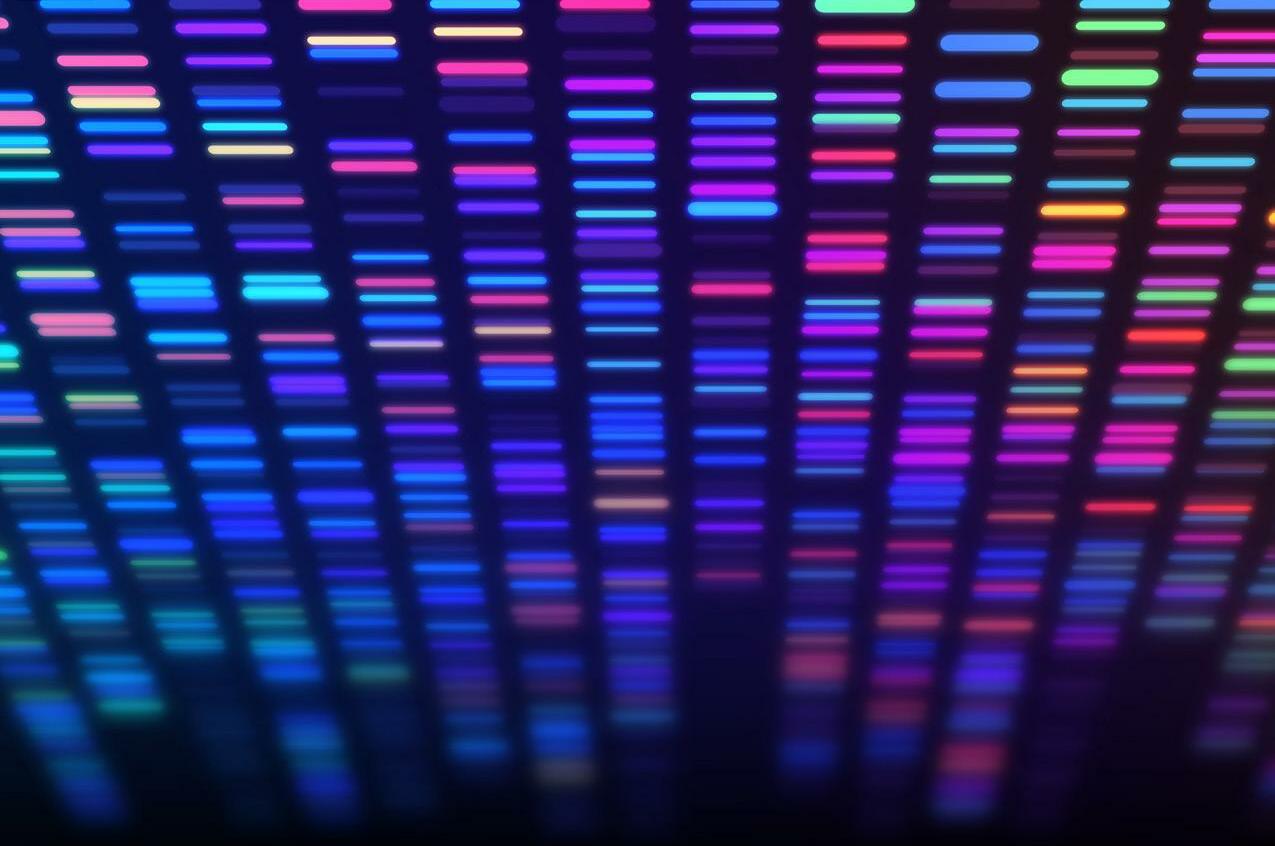
Direct-to-consumer genetic and genomic tests might examine single genes, like the cystic fibrosis gene (CTFR), look for variations (single nucleotide polymorphisms or SNPs) in thousands of different genes, or use whole genome sequencing. They provide information about ancestry, traits, health risks, hereditary diseases, or optimisation of diet or medication based on genetic information.
The term ‘direct-to-consumer genetic test’ (DTC-GT) is generally used to describe tests that are ordered, conducted and reported without involving a health professional.
Men’s use of DTC-GTs
Not much is known about men’s use of DTC-GTs. It seems that Australian males are less likely than females to have a ‘personal genomic test’1 but US males are slightly more likely than females to have one (but are less likely to discuss their test results with a medical professional)2
Concerns about DTC-GTs
When DTC-GTs first became available, concerns were expressed about the capacity of genetic counselling services to meet the anticipated demand3 . Over 10 years, 11 Australian clinical genetics services received 114 referrals resulting from DTC-GTs 4 . In the majority the referrer was ‘unsure of the significance of the DTC-GT results’.
Information supplied by DTC-GT providers is complex and difficult for many people to understand 5. The ‘genetic literacy’ (the ability to understand and make use of genetic information)3 of consumers and health professionals is regarded as insufficient for dealing with DTC-GTs, resulting in recommendations for improved education 6
Even if DTC-GT results are understood, they may not be reliable. A small US study of requests for clinical testing to confirm DTC-GT results showed 40% of variants to be false positives7.
The clinical utility of DTC-GTs is limited in some instances by their narrowness, and in others by their breadth 8 . Of the thousands of genetic variants that affect health, DTC-GTs measure only a few, potentially missing some that influence disease risk. This can give the impression that someone has no genetic risk when in fact they do. The reference genomes used as the basis for comparisons might also be too narrow, making
results irrelevant to people of different ancestry8.
The breadth of DTC-GTs can be problematic if variations are detected in genes that have only minor consequences for disease risk or lack evidence-based management strategies3. Knowledge that you possess a genetic variation that confers increased disease risk, but lacks effective treatment, can cause distress or harm from unnecessary screening and treatment.
Australian regulations essentially prevent the provision of healthrelated information (limiting interpretations to ancestry and traits) but there are many “thirdparty interpreters”, who provide health-related information from ‘raw data’ downloads of test results. Twothirds of people who have a DTC-GT in the US use a third-party service to interpret their raw data9. These services suffer from the problems of narrowness and breadth mentioned above, in addition to concerns about consent and data privacy10.
In purchasing a DTC-GT, consumers agree to share with the testing company their genetic information, which may be used for research, sold to third parties, and stored indefinitely, meaning that identifiable genetic information could be used for purposes not considered when people choose a DTC-GT. For example, the Golden State Killer, Joseph D’Angelo, was arrested in 2018 based on genealogy performed using public databases from DTC-GTs, which initially identified a distant cousin11 D’Angelo may never have been identified without DTC-GTs, even though he never had one.
Practicalities of DTC-GTs
Health care professionals are concerned that people are misled and misinformed before choosing to undertake DTC-GTs12, which is
not surprising since counselling before and after clinical genetic tests is the norm.
Ideally, patients would discuss their intention with their general practitioner before undergoing a DTC-GT13. In these circumstances GPs should ask 14:
• How much does the patient understand about the test?
• What do they want to find out and what will they do with that information?
• Have they thought about the impact of testing on insurance?
• Will the company help interpret the results?
• Are you able to assist in interpreting results?
Helpful questions for patients considering DTC-GTs include15:
• Why do you want the test?
• If you receive a concerning result, does the provider of the test have people you can talk to about it and qualified people to advise you?
• Have you read the small print?
• Could having the test affect your family?
• Are you comfortable with how the test provider might use your genetic data?
If GPs are presented with patient concerns arising from a DTC-GT, it’s best to encourage and respond to questions16. Patients should be reassured that the predictive value is low when there is no family history of disease, and that false positives are common15
REFERENCES
To view the full article with references online, please scan this QR code.

If a patient presents with a ‘positive’ result for a disease-causing gene variant identified by a DTC-GT, clinical genetic testing is necessary only if early disease detection and/or treatment are available; not if variants are not ‘clinically actionable’15. In most cases, explaining the limitations of the results and counselling the patient about lifestyle modifications that reduce disease risk is suitable15, 16 Patients with ‘positive’ results and symptoms of disease should be investigated the same way as other patients without DTC-GT results15
If health professionals know that patients have undergone a DTC-GT and received ‘negative’ results, it can be informative to enquire about their reasons for having the test in the first place. Some people may receive false negative results for heritable diseases that require more appropriate clinical investigations15
DTC-GTs present an opportunity
Despite their limited clinical utility, DTC-GTs respond to people’s desire to take responsibility for their health and wellbeing. The conversations that emerge from patient enquiries about DTC-GTs can be illuminating for patients and health professionals, providing chances to discuss patients’ health concerns and ways to minimise risk and screen for disease.
Sexism in medicine is bad for everyone
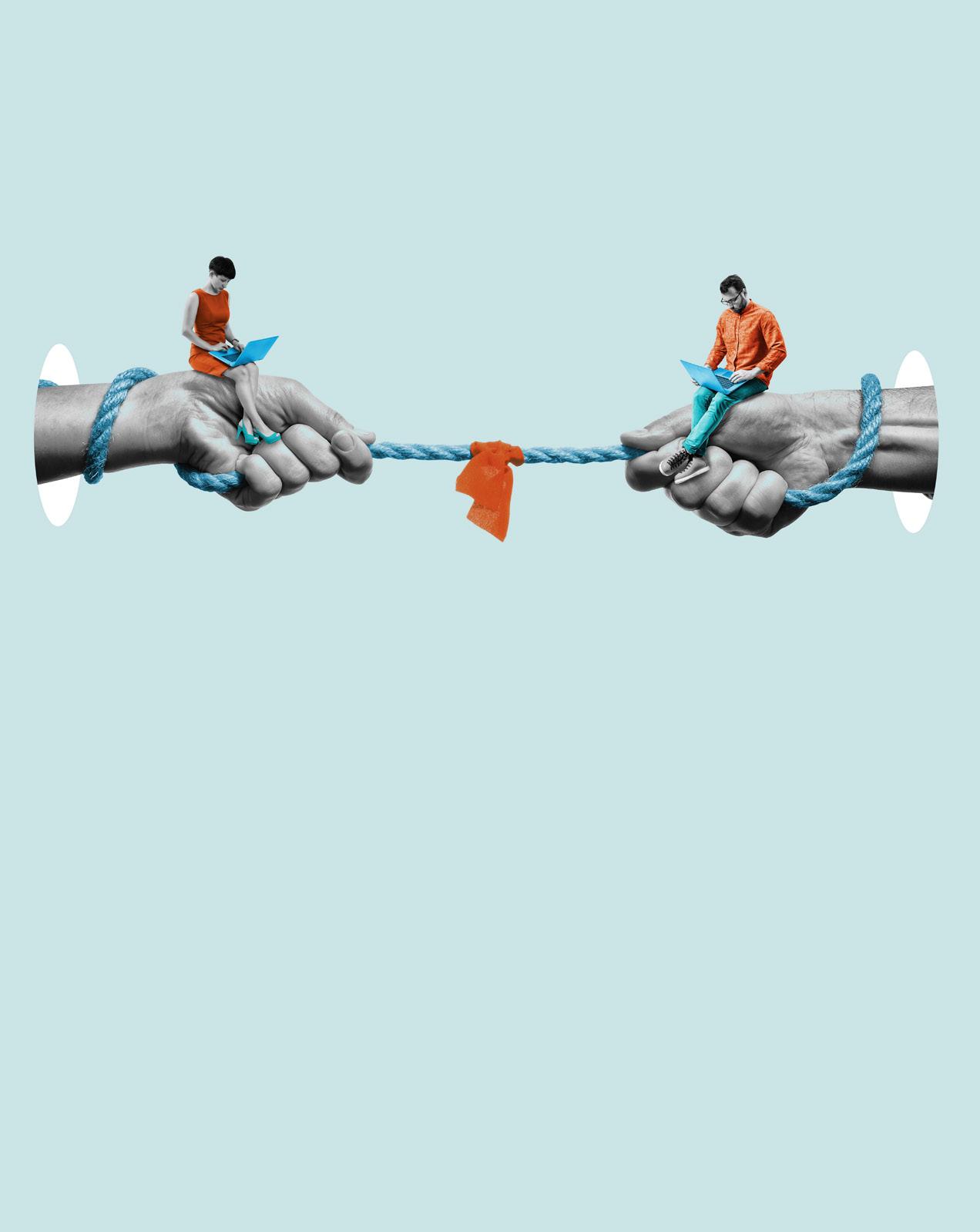
One hundred and twenty years ago, Archibald Garrod (now lauded as the father of precision medicine1) wrote, “Just as no two individuals of a species are absolutely identical in bodily structure neither are their chemical processes carried out on exactly the same lines”2 .
We now understand that genetic variations underlie the physiological differences that Garrod observed between individuals, and that this variability is due to differences in only a fraction of our genes. Human males are, genetically, 99.9% the same regardless of race, and the same degree of variability is present between human females. The genetic similarity between men and women though, is 98.5%, meaning the difference between the
sexes is 15 times greater than the difference between individuals of the same sex. As comically pointed out by MIT Professor of Biology, David Page3, who has championed the need for consideration of sex in all aspects of medicine, that’s the same as the genetic difference between male humans and chimpanzees.
Unfortunately, Garrod’s extrapolation of biological variability progressed only so far as to liken humans to vegetables and other animals, and to speculate on variability between ‘the several races of mankind’. Garrod was aware of sex differences in vulnerability to diseases but thought ‘the influence of sex is much less obvious’ than the differences between children and adults2
More than half of human diseases (based on the International Classification of Disease-10 or Global Burden of Disease classifications) have age-adjusted incidence rates that are different between men and women 4 . Sex and gender affect disease pathogenesis, manifestation, progression, diagnosis and treatment responses for heart disease, cancer, chronic lung disease, stroke, Alzheimer’s disease, diabetes, chronic kidney disease, chronic liver disease, depression, COVID-19 and more 5 .
Differences in biology
The fundamental genetic difference between men and women — the XX or XY genotype — is responsible for much more than sex determination, secondary sex characteristics and reproduction.
The Y chromosome has genes that are homologous to some on the X chromosome but they are expressed differently in tissues throughout the body, and have different functional consequences 5. Imprinting of the X chromosomes and X chromosome inactivation in females during development means they carry maternal and paternal imprints and have more variability in expression of genes on their X chromosomes. The other 22 pairs of chromosomes (the autosomes) are also imprinted in sex-specific ways. So, from the time of conception, there are differences in gene expression between males and females that persist throughout life 5
Endogenous and environmental factors (e.g. hormones and pollutants, respectively) alter gene expression in sexually dimorphic ways 5. These cause sex differences in bodily structure and function and create distinctly different biological systems in males and females, which influence susceptibility to disease across the lifespan 5. Sex differences in endocrine function
are accompanied by differences in the function of the immune system, aging and neurological function, metabolism and numerous other cells and systems.
Females are more likely than males to have adverse drug reactions, in part owing to sex differences in body composition, drug metabolism and drug excretion that can cause differences in the effects of medicines6.
Not all differences in health and disease between men and women can be accounted for entirely by biological differences between the sexes. Gender (the socially constructed norms that determine roles, behaviours and relationships) has effects on health and disease that can be distinct from sex (the biological characteristics of males and females). Gender influences behaviours that may affect susceptibility to disease (e.g. smoking), access to healthcare, the provision of care by health practitioners and institutions, or an individual’s behaviour in response to symptoms, diagnosis or treatment7 Unlike the binary classification of sex, gender is fluid and is a continuum of coexisting masculine and feminine traits.
Sexism in medicine is bad for everyone
A failure of sexual equality in medical research, which has traditionally seen medications trialled exclusively in men, with results then extrapolated to women, is a major contributing factor to differences in health outcomes8 Sex bias in medicine is generally considered to disadvantage women over men, but this is not always the case.
The relative rarity of breast cancer in men has seen it treated as analogous to breast cancer in women, with treatment deduced from evidence collected largely from
studies of women. However, recent evidence shows breast cancer in men to be a disease that is distinct, and with worse outcomes, from that in women 8 . The perception of breast cancer as a ‘women’s disease’ has stigmatised breast cancer in men9, which may contribute to men’s later presentation in the course of the disease10 and worse outcomes.
It is only relatively recently that we have begun to appreciate that depression in men may manifest differently than it does in women and that sex differences in prevalence are an artefact of inaccurate diagnostic instruments11 . This too is a consequence of medicine’s sexist past.
12 .
We need to move past sex and gender biases and their restrictions on our ability to diagnose and treat disease, and embrace sex and gender as critical and fundamental determinants of health and disease.
REFERENCES
To view the full article with references online, please scan this QR code.

“Viewing the patient through a sex and gender lens is the first step towards personalising care”
How health services can better support boys and men

There’s an increasing number of resources developed for health conditions experienced by boys and men, and you could be forgiven for thinking that most of the innovation in modern men’s health initiatives is online. The reach of these virtual initiatives is wide, aided by rapid dissemination in this present age of digital health, social media and disruption.
The expansion of online men’s health services has typically targeted young males, ‘cures’ for erectile dysfunction, hair loss and obesity, and products to enhance wellbeing. These services are extolled by their operators as supporting men by rapidly and discreetly delivering treatments for self-reported symptoms but their convenience circumvents thorough engagement with medical expertise, and discourages integrated management of an individual’s overall health.
Thorough examination of patients is difficult online, and management of the underlying causes of disease may be compromised by symptomatic treatments. How can you virtually identify and treat underlying cardiovascular disease in a patient with erectile dysfunction? These systems are not built for that. In such an environment, fortifying public health messaging that addresses the underlying biopsychosocial determinants of men’s health is a challenge that seemingly grows every day.
Men are often characterised as being reticent about their health. But a consideration that many have been pondering is whether health systems themselves perpetuate men’s health behaviours that work against them. Can health services do more in relation to boys’ and men’s health and wellbeing?
Health advertising to boys and men within healthcare waiting rooms is five times less frequent than female-oriented advertising1 . This signals to men that our clinical spaces are not really for them. Creating safe and welcoming health services for men and boys requires very few interventions, which in turn may result in greater engagement.
Understanding how boys and men access healthcare is important if we’re to deliver services that really are for them. The diverse places where boys and men interact provide opportunities for health promotion2 . The expansion of Men’s Sheds here in Australia and in many other countries has been heralded as a defining example of organic men’s health in action3. Other notable initiatives to engage with men to their health have been within sporting clubs, barbershops, pubs and places of worship 4
Health services could do well to heed the established advertising principles of product, price, place and promotion as we move ahead to respond to men’s health needs 5 . A good example of a healthcare service that is cognisant of its audience, service accessibility, setting and promotion is the McGrath Foundation breast cancer service. The McGrath Foundation model of care centralises a nurse coordinator within a framework of supportive care delivery and leans heavily into traditionally associated female imagery including colours and gendered representations. Whilst challenging hegemonic male stereotypes is often recognised as supporting men to break out from traditional norms and constructs, there may be a place for discussion on how men’s services operate within existing advertising principles when trying to appeal to boys and men.
Within health settings, there are emerging ideas about how practitioners can better engage and
position themselves to reach men, who on average utilise healthcare services less often than women and often at a later stage of disease6
A recent development in clinical men’s health is the philanthropic investment by the NELUNE Foundation to build a stand-alone men’s health centre within the St. Vincent’s Sydney Healthcare Campus. Supported by consumer demand for a more gender-focused approach to unmet supportive care needs within oncology, the St. Vincent’s NELUNE Men’s Health Centre signals a bricks-and-mortar approach to men’s health. Phase one of the Centre is due for launch in early 2023 and will deploy a large multi-disciplinary team to respond to prostate cancer treatment needs. Additional phases will incorporate other cancer tumour streams into practice, with a focus on vulnerable male populations.
The inclusion of the words ‘men’s health’ within the Centre’s name speaks to a nuanced departure from the traditional biomedical model of naming outpatient services based on the disease or condition (e.g. “diabetes clinic”) into a service that acknowledges men and manhood within a health paradigm. This purposeful shift in language is a statement of intent from St. Vincent’s healthcare planners — that consumers are greater than the sum of their disease or acquired conditions, and that a ‘men-in-mind’ approach is being purposefully deployed.
Men’s health services are maturing and entering new territories in Australia, which is cause for
REFERENCES
To view the full article with references online, please scan this QR code.

optimism and excitement to patient groups and men’s health advocates. The challenge ahead is to support further sustainable models of malecentric healthcare delivery.
Michael Whitehead is the Men’s Health Clinical Nurse Consultant at St Vincent’s Hospital in Sydney, Australia, and the clinical lead for the St Vincent’s NELUNE Men’s Health Centre. Michael is a published author, researcher, presenter and men’s health advisor, who has presented at numerous men’s health forums, webinars and conferences locally and internationally. Recent collaborative work includes Family Planning NSW, Healthy Male and the Movember Foundation. Michael has a Masters in Clinical Nursing focusing on primary and preventative health and has recently completed studies in Clinical Redesign with the NSW Agency of Clinical Innovation (ACI). He has presented alongside the World Health Organisation and at the World Congress of Public Health.

Health professional education
Healthy Male is committed to enhancing the current and future workforce capacity in male health. To support Australian health professionals, we provide accredited professional education activities, evidencebased clinical resources, orchidometers for clinical use and regularly publish topical research reviews.
Male health in primary care webinar series
Watch our on-demand webinar series on male health in primary care, and learn how to better understand, manage and refer health and wellbeing presentations that impact Australian males in primary and community care settings.
This webinar series provides an overview of the priority health areas and conditions identified in the National Men’s Health Strategy 2020-2030. It also provides an overview of the epidemiology of the priority health area, a brief review of pathophysiology where relevant and applicable, and provides case study presentations to support translation of information to practice.
Male health topics covered include:
• Barriers to engaging men
• Sex, continence and prostate surgery
• Male fertility and preconception health
• Sexual dysfunction
Go to medcast.com.au/courses and filter by Providers/ Healthy Male in the left-hand menu.
Series two of our webinar series will be coming in 2023, and will cover:
• Healthy ageing
• Prostatitis and chronic pelvic pain
• Body dysmorphia in men
• Sexually transmitted infections and sexual health screening.
Subscribe to our e-newsletter to stay up-to-date with webinar release dates, eLearning opportunities and clinical resources.
Professional education
Healthy Male are also proud to offer continuing professional development activities for GPs, nurses and Aboriginal and Torres Strait Islander health workers, as well as other health and medical professionals.
Our training activities are:
• Content-driven by cases and problems commonly encountered day-to-day in health care settings
• Developed under the guidance and direction of our reference groups and expert advisors.
• High quality, structured and provide opportunities for self-directed learning.
REFERENCES
Learn more about our professional education opportunities on our website, please scan this QR code.

Clinical resources for health professionals
Healthy Male produce a wide range of evidencebased resources for health professionals, from clinical summary guides to best practice guidelines and printable patient assessment tools.

Clinical resources available to download and print:
• Clinical summary guides
• National data set specifications
• Patient assessment tools
• Practice guidelines.
Research reviews
We regularly review and summarise research articles published in scientific and medical journals that are relevant to the growing evidence base in male health.
REFERENCES
Health professionals can download any of our resources from our website or order hard-copy clinical summary guides and patient information guides for free through our online store. Please scan this QR code to find out more.
Our research reviews are for anyone with a professional or personal interest in male health, and cover a range of topics, including prostate disease, prostate cancer, testicular cancer, male infertility, androgen deficiency, and erectile dysfunction, as well as other emerging areas that are relevant to the health and wellbeing of Australian men.

